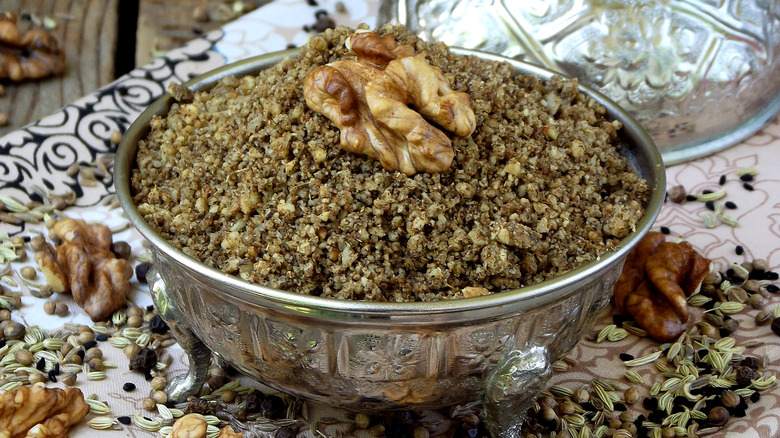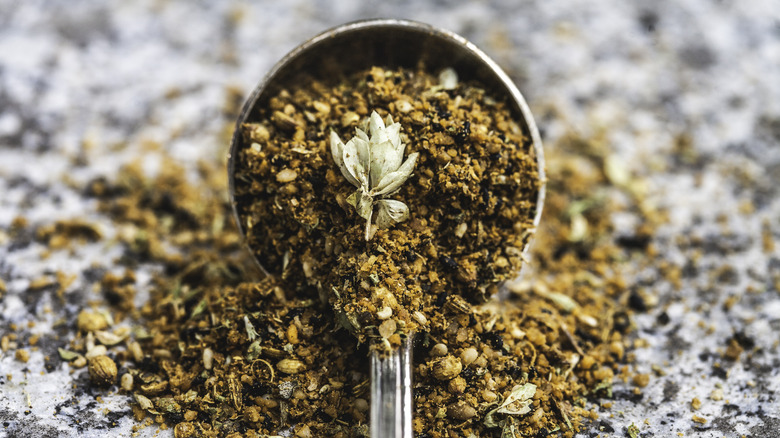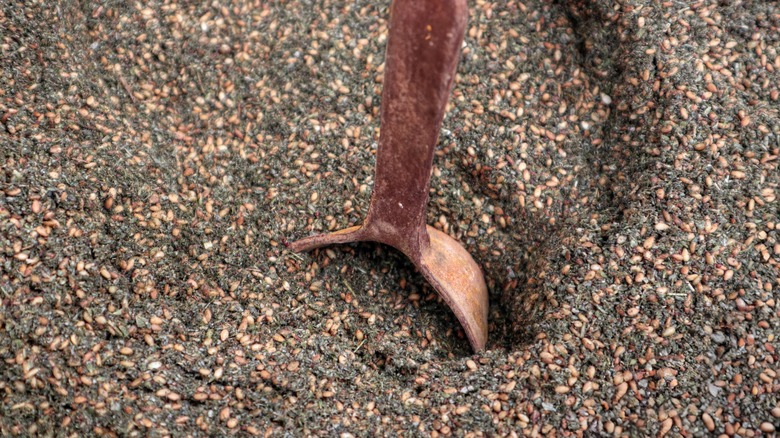What Is The Difference Between Dukkah And Za'atar?
No matter where you go around the world, one thing you're going to find is some sort of regional spice blend. From Montreal steak seasoning to Chinese five spice, these blends may taste different, but they all have the same core goal: to make food better. The Middle East is certainly no exception to this trend. Enter za'atar and dukkah.
You're most likely to have encountered za'atar before — dukkah is a little less well known. How are the two different? The answer is kind of complicated, given the vast number of regional and household varieties of both blends (a function of them not coming from the same country). The top takeaway, though, comes down to ingredient variation. While za'atar is well known as an herb mixture, dukkah is made from seeds and nuts. As such, the ways you use each blend are different.
The two come from the same region, but not the same country
The fact there are so many varieties of za'atar isn't surprising when you realize the stuff is extremely widespread. The most likely point of origin is modern-day Palestine, but za'atar is now widely eaten across Lebanon, Syria, Jordan — pretty much the entire Levant area. We don't know when it was first created, but it's been around a long, long time, as evidenced by the fact that there are references to an early version of it in the Bible. By contrast, we do know where dukkah comes from: Ancient Egypt. Interestingly enough, it isn't pronounced "dukkah" in Egypt, but "dua'ah."
This difference in country of origin explains why the two blends have such different components. At its core, za'atar comes down to a few common elements: oregano, thyme, marjoram, toasted sesame seeds, and sumac. Savory, sea salt, mint, caraway, cumin, coriander, dill, and anise might also make appearances, and some versions can include tomatoes and onions. Those sesame seeds are the main point of consistent ingredient overlap between za'atar and dukkah. The latter blend combines them with coriander seeds and either pistachios or hazelnuts. The word "dukkah" itself comes from the Arabic term for "to crush," which is apt, as the ingredients in dukkah are ground into a powder as part of the creation process.
Dukkah and za'atar are used differently
Though the core ingredients are different, regional varieties lead to more overlap between za'atar and dukkah than you might expect. Syrian za'atar might feature cumin and coriander, for example, while Turkish za'atar favors pistachios. Some dukkah blends also feature salt, cumin, fennel seeds, and others even include za'atar itself as a component. While they're distinct, just how distinct they are depends on where you're eating them.
Since there are so many regional variants, describing how you should use each can be a bit tricky, since different flavor profiles go with different foods. There are some core concepts worth discussing, though. Vegetables are typically the province of za'atar. It might sound off, but try za'atar on green bean casserole and have your mind blown. You also see it a lot as a topping for eggs, hummus, beans, and seafood. Dukkah, meanwhile, is very commonly used as a dip in conjunction with olive oil, and can be used as a coating for savory meats such as lamb.


